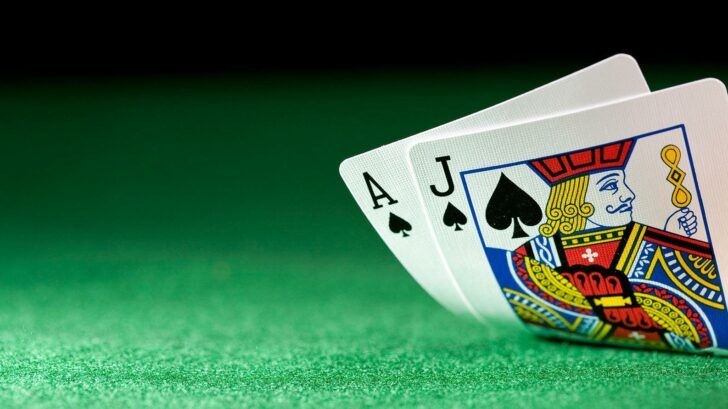Strange Scientists of the Sixties and Blackjack

The men behind the dawn of the information age were no less weird than the sons and daughters of the Age of Aquarius.
There is the tendency, when thinking of the sixties, to get carried away with images of hippies in flares dancing to psychedelic music whilst smoking the sort of thing that gets you arrested whilst nearby a girl with flowers in her hair expresses an interest in free love. However, for a great many people the sixties were merely the fifties with better machines.
The academic world of MIT and Princeton, not to mention the Bell Telephone Laboratory, were a universe away from the heady atmosphere of Woodstock. Serious men worked on serious science very seriously making the sort of serious developments that had serious ramifications for yet more serious people. Oddly, these men of science were no less weird than the hippies.
The cutting edge of academia tends to attract the slightly weird of thought, and in the 1960s there were a great number of them. Claude Shannon was one, John Larry Kelly Jnr another and Edward O Thorp one more. These three would take mathematics and apply it to the more fundamental aspects of our lives… and then use it to cheat at roulette.
They were men of science but their backgrounds and hobbies were as bizarre as anything a field full of counter-culture clowns listening to Santana might have being doing. Perhaps akin to Leonardo Da Vinci in terms of variety of interests these very different men used their knowledge of math and engineering to further no just mankind but also their bank balances.
Ultimate machine
Claude Shannon, arguably father of the information age, might have invented the basis of all computers and circuits, he might have created the framework for all digital communication and indeed helped define the world as we know it today, but in essence he was a gadgeteer. Raised in Gaylord, a town you just know had issues, he was a tinkerer from an early age.
The scientists of the Psychedelic Age:
• Professors who made blackjack history
• Gunslingers, jugglers and gamblers
• From MIT to Las Vegas
As a child he built a wireless telegraph system to operate between his house and that of a friend, created remote controlled planes and boats, and that he went on to study such things was no surprises to anyone. He got two degrees, one in electrical engineering, the other in Mathematics and with those went to MIT.
His thesis “A symbolic analysis of relay and switching circuits” might sound a dry read but it is probably the most important thesis of the 20th century in that it laid out nearly all the concepts needed for the information age. Compare this with his building of a chair lift from his house to a nearby lake or perhaps his best known frivolities, the ultimate machine.
The ultimate machine was a box on his desk with nothing but a switch upon it. When you flipped the switch a hand would extend from the machine, and flip the switch off again. He considered this hugely amusing, but then he’d also invented a gasoline powered pogo stick and (reputedly) a trumpet that doubled as a flame thrower.
The golden fleece
Edward O Thorp, meanwhile, was a dyed in the wool gambler who used his position as a professor of mathematics to use an IBM 704 to develop the system of blackjack rules of thumb that we all know today as card counting. His development of this strategy of optimization wouldn’t have been possible without the ability to use the Kelly Criterion to maximize utility.
But it was Thorp who took Shannon to Vegas, and who spent hours in the basement with Shannon creating a wearable computer to assist (cheat) at roulette. Just how normal can you possibly be if you’re spending the early sixties in your basement creating a computer the size of a packet of cigarettes to help fleece a casino?
The wearable computer was a success despite a few technical failings of construction and Shannon and Thorp made good money using it at the tables. His card counting system is still used today by a great many players. Oddly the creator of the theory it’s based upon, John Larry Kelly Jnr claimed never to have used it for his own fiscal advantage.
A Texan that flew for the US Navy during the war Kelly’s Criterion was such novel analysis at the time that his hobbies of gun slinging and daredevil piloting possibly faded from notice, but how many mathematicians do you know who could out-draw John Wayne? Compared to his contemporaries he was no stranger than they were, and they made blackjack history.
Read more about Claude Shannon, blackjack and information theory.




